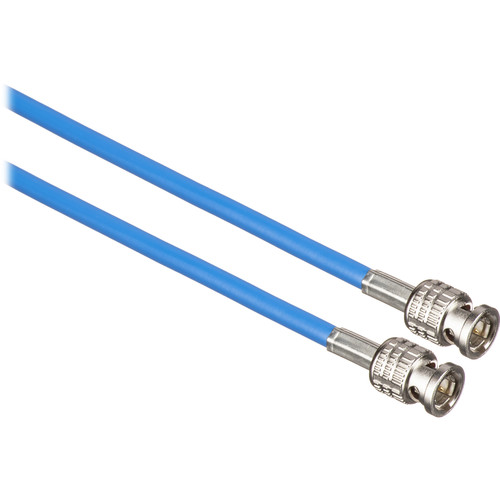Serial digital interface (SDI) is a family of digital video interfaces first standardized by SMPTE (The Society of Motion Picture and Television Engineers) in 1989. Today, an uncompressed, full bandwidth signal that can be carried on just one wire. Even though it is now being used as the signal of choice for high definition TV, its roots go back many years to standard definition, or SD video. Today, we have many flavors of SDI that differ primarily in their serial data rate and the resolution of the video signal they carry.
SDI takes this even further by supporting, in addition to the video, the capability to transport up to 16 channels of audio (either digital AES or analog converted to AES), metadata about the video content itself and other ancillary data. All this is done in a defined, non-proprietary manner according to a suite of SMPTE standards which include using SDI standards to transport compressed video standards and even 3D-TV. The implications of this are vast. One signal can now be used for transporting video and audio saving on cable costs. Technically, the audio and video can remain in lip-sync as long as they are transported together throughout the distribution network.


| Standard | Name | Introduced | Bitrates | Example video formats |
|---|---|---|---|---|
| SMPTE 259M | SD-SDI | 1989 | 270 Mbit/s, 360 Mbit/s, 143 Mbit/s, and 177 Mbit/s | 480i, 576i |
| SMPTE 344M | ED-SDI | 540 Mbit/s | 480p, 576p | |
| SMPTE 292M | HD-SDI | 1998 | 1.485 Gbit/s, and 1.485/1.001 Gbit/s | 720p, 1080i |
| SMPTE 372M | Dual Link HD-SDI | 2002 | 2.970 Gbit/s, and 2.970/1.001 Gbit/s | 1080p |
| SMPTE 424M | 3G-SDI | 2006 | 2.970 Gbit/s, and 2.970/1.001 Gbit/s | 1080p |
| SMPTE ST-2081* | 6G UHD-SDI | 6 Gbit/s | 4Kp30 | |
| SMPTE ST-2082* | 12G UHD-SDI | 12 Gbit/s | 4Kp60 |
3G/HD/SD-SDI Extenders
BZB Express offers a wide variety brands for extending 3G-SDI, HD-SDI and SDI signals. The most economical way of extending an SDI signal is using a cable equalizer, which will transmit an HD-SDI 400 feet and an SDI, signal 500 feet. For extreme SDI extension, the use of fiber optic transmitters and receivers will carry a 3G-SDI, HD-SDI and SDI signals up to 30 km or 18.75 miles. SDI extenders can be found in applications such as live staging or postproduction, studio work and other broadcasting type environments.

SDI Amplifier & Splitters:
SDI Distribution Amplifiers and splitters allows a single or multiple SDI, HD-SDI or 3G-SDI video source to be distributed to (without loss of signal) four HD SDI/HDSDI/3GSDI devices at the same time. Crisp, highly defined visuals are generated in NTSC or PAL format.

SDI Switcher
SDI Switchers allow SDI signals to switch from one source to another whether you have 2, 4, 8 or more SDI signals. SDI switchers are mainly used in broadcasting applications such as studio work, live staging or postproduction. These types of switchers may be as simple as a 4×1 I/O, fixed I/O matrix switchers, modular solutions or even as a seamless switcher with PIP (picture in picture) feature. Many of these SDI switchers support audio, but if you are only looking for video that option is available.

SDI Converters and Scalers
Serial Digital Interface, better known as SDI is part of the family of digital video interfaces. The purpose of SDI converters is to either convert SDI to a different standard such as HDMI, DVI, component and composite or vice versa. There are many types of SDI converters depending on your application. SDI Converters are typically used in broadcasting environments, studio work, live staging and post production.


 BZBtv
BZBtv DIY
DIY TECH TRENDS
TECH TRENDS


In addition to the regular serial digital interface described here, there are several other similar interfaces which are similar to, or are contained within, a serial digital interface.